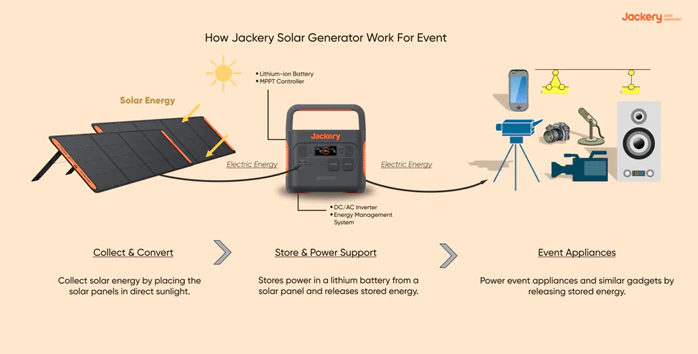IThe key elements of Information Technology include hardware, software, data, networks, and human resources. These components work together to manage and process information.
Information Technology (IT) is crucial in today’s digital age. IT involves the use of computers, storage, networking devices, and other physical devices. It also includes software applications and data management systems. Hardware consists of physical devices like servers and computers.
Software includes applications and operating systems. Data encompasses all the information processed and stored. Networks connect different IT components, enabling communication and data exchange. Human resources are essential for IT management and operations. Understanding these elements helps businesses and individuals leverage technology effectively.
Introduction To Information Technology
Information Technology, or IT, is a vital part of our world. Involves the use of computers and networks to store and share data. IT helps businesses run smoothly and allows people to connect easily. It includes hardware, software, and services. Each of these components plays a crucial role.
IT has changed how we live and work. It makes communication faster and easier. People can now work from home using IT tools. Healthcare, education, and entertainment have all improved thanks to IT. It also helps in solving complex problems quickly.
Information Technology has grown rapidly over the years. It started with simple computers and has now moved to advanced technologies. The internet has played a big role in this growth. Cloud computing and AI are the latest trends. They offer new ways to store and process data. The future of IT looks promising.
Hardware Components
There are many types of hardware in IT. Computers are the most common. They include desktops, laptops, and servers. Storage devices help save data. Examples are hard drives and SSDs. Network devices like routers and switches connect computers. Input devices are keyboards and mice. Output devices are monitors and printers. All these parts work together in IT systems.
Hardware is very important in IT. It is the foundation of all IT systems. Without hardware, software cannot run. It helps process data quickly and efficiently. Good hardware makes systems reliable and fast. It also helps in data storage and networking. Upgrading hardware can improve system performance.
Software Applications
Software applications play a crucial role in information technology, incorporating key elements such as data management, user interface design, and security protocols. Efficient software solutions enhance productivity and streamline operations across various industries.
System Software
System software helps run the computer hardware. It includes the operating system and utility programs. The operating system manages all hardware and software resources. Utility programs help maintain the computer. Examples are antivirus software and disk cleanup tools.
Application Software
Application software performs specific tasks for users. These tasks can be for work or play. Examples include word processors, web browsers, and games. Word processors help create documents. Web browsers allow you to explore the internet. Games provide entertainment and fun.
Networking Fundamentals
There are different types of networks. Local Area Networks (LAN) connect computers in a small area. Wide Area Networks (WAN) cover large areas. Metropolitan Area Networks (MAN) are larger than LANs but smaller than WANs. Personal Area Networks (PAN) connect devices close to one person. Virtual Private Networks (VPN) provide secure connections over the internet.
Networking protocols are rules for data communication. Transmission Control Protocol/Internet Protocol (TCP/IP) is the most common. Hypertext Transfer Protocol (HTTP) is used for web pages. File Transfer Protocol (FTP) transfers files between computers. Simple Mail Transfer Protocol (SMTP) is used for email. Internet Protocol (IP) addresses and routes packets.
Data Management
Database systems store large amounts of data. They help in organizing and retrieving this data. Efficient systems can handle many queries at once. This ensures quick access to information. Users can update data without much effort. Backup features protect against data loss. These systems are essential for business operations.
Data security keeps information safe from unauthorized access. It uses tools like firewalls and encryption. Strong passwords and two-factor authentication add extra layers of protection. Regular security audits help find and fix weaknesses. Keeping data secure is crucial for trust and confidentiality.
Cybersecurity
Cybersecurity is very important. Many threats can harm systems. Hackers try to steal data. Viruses can damage computers. Phishing tricks people to give information. Malware can spy on users. Systems need to be safe. Vulnerabilities make systems weak. Weak passwords are a risk. Unpatched software can be exploited. Network attacks can happen anytime.
Strong passwords protect accounts. Antivirus software stops malware. Firewalls block bad traffic. Regular updates fix vulnerabilities. User education is key. Backup data to prevent loss. Use encryption to secure data. Monitor networks for suspicious activity. Implement multi-factor authentication. Secure Wi-Fi networks. Disable unused services. Regularly review security policies.
Cloud Computing
Cloud computing allows businesses to save money. They don’t need to buy expensive hardware. They can also save on software costs. Everything is available online. It is easy to scale resources up or down. This helps businesses stay flexible. They can respond quickly to market changes. Data stored in the cloud is safe. Backup and recovery are simple. Employees can work from anywhere. All they need is an internet connection. This boosts productivity and collaboration.
| Type | Description |
| Infrastructure as a Service (IaaS) | Provides virtualized computing resources over the internet. |
| Platform as a Service (PaaS) | Offers hardware and software tools over the internet. |
| Software as a Service (SaaS) | Delivers software applications over the internet. |
Future Trends In It
Artificial Intelligence (AI) is changing the world. AI helps machines to think like humans. AI can learn from data and make decisions. Many companies use AI to improve their services. AI can help in healthcare, finance, and many other fields. AI can also help with customer service. AI-powered chatbots can answer questions quickly. AI is becoming smarter every day.
The Internet of Things (IoT) connects devices to the internet. These devices can communicate with each other. Smart homes use IoT to control lights and appliances. IoT can help in many industries. Factories use IoT to monitor machines. IoT can also help in agriculture. Sensors can monitor soil and weather conditions. IoT is making our lives easier and more efficient.
Conclusion
Mastering the key elements of information technology is crucial for business success. These elements enhance productivity, security, and innovation. By understanding them, companies can stay competitive and efficient. Investing in IT infrastructure and training ensures long-term growth. Stay updated with the latest IT trends to maintain a competitive edge.










